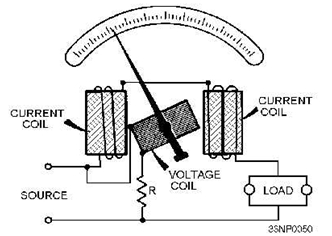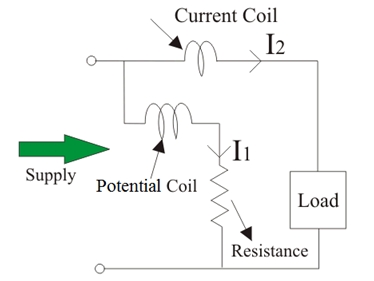Do you know how does a Wattmeter work? If not, don’t worry because our devoted member Nasir chose to dedicate this new part of his tutorial series on measuring instruments to the wattmeter.
You still can send us your articles by mail for them to be published on the blog!
The first question that knocks our mind before starting on the working of a wattmeter is “what it is used for?”. As evident from the name, a wattmeter is used for measuring the total power across any circuit.
We know that the units of power are watts, so as for many other instruments, we can easily know that where the name of this instrument comes from. In simple words, a wattmeter is used for measuring the watts in the circuit.
Construction of a Wattmeter
The internal construction of a wattmeter is such that it consists of two cols. One of the coil is in series and the other is connected in parallel. The coil that is connected in series with the circuit is known as the current coil and the one that is connected in parallel with the circuit is known as the voltage coil.
These coils are named according to the convention because the current of the circuit passes through the current coil and the voltage is dropped across the potential coil, also named as the voltage coil.
The needle that is supposed to move on the marked scale to indicate the amount of power is also attached to the potential coil. The reason for this is that the potential coil is allowed to move whereas the current coil is kept fixed.
The mechanical construction of a wattmeter is shown in the figure below.
Working of a Wattmeter
When the current passes through the current coil, it creates an electromagnetic field around the coil. The strength of this electromagnetic field is directly proportional to the amount of current passing through it.
In case of DC current, the current is also in phase with its generated electromagnetic field. The voltage is dropped across the potential coil and as a result of this complete process, the needle moves across the scale. The needle deflection is such that it is according to the product of the current passing and the voltage dropped, that is, P = VI.
This was the case of DC power. We know that the AC power is given by the formula P = VIcosθ, and we know that this cosθ factor is because of the fact that the current and voltage are not in phase.
But the question that arises here is that how will a wattmeter measure the AC power and this power factor? So the wattmeter simply measures the average power in case if AC power is required.
The measurement principle of wattmeter is shown in the figure below:
Applications of Wattmeter
-
- As other measuring instruments, watt meters are also used extensively in electrical circuit measurement and debugging.
- They are also used in industries to check the power rating and consumption of electrical appliances.
- Electromagnetic watt meters are used to measure utility frequencies.
- They are used with refrigerators, electric heaters and other equipment to measure their power ratings.
This was all about watt meters. What they are used for, what is their mechanical construction and how do they work. As evident, they are of extreme importance and extensive use in electrical related industries and like other measuring devices, are quite easy to use and accurate.
In his next tutorial, Nasir is going to explain another very important measuring device. Can you guess which one?



Excellent Articles; simple, short and well-illustrated.
Acknowledge your nice services sent to you even from Afghanistan.
Regards, Prof. Nazar M. Karyar
pls prof. how can i prove in two wattmeter method of 3-phase measurement the sum of the reading of the two wattmeter give the total power consumed in 3-phase circuit. tan ф=√3 w1-w2/w1+w2 where ф is the phase angle of the load and w1 and w2 are the readings of the wattmeter